2016 Projects


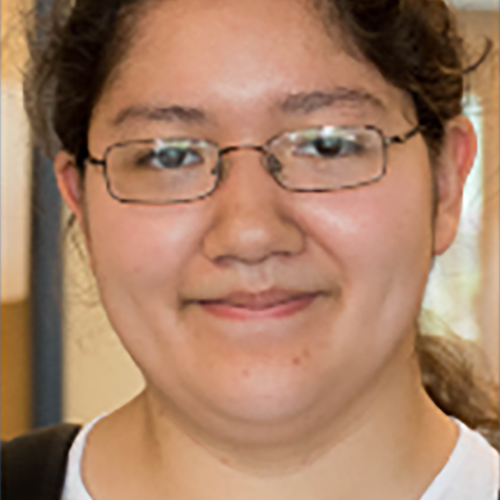 |
Rebecca Agustin ’19Electrical Engineering and Computer Science Advisor: Daniel Frey, Professor, Mechanical EngineeringDirect Supervisor: Nicolas Arango, Graduate Student, Electrical Engineering and Computer ScienceSponsor: MITEI Undergraduate UROP Fund Battery efficiency and validation testing for the MIT Electric Vehicle Team The MIT Electric Vehicle Team is currently converting a 1970 Opel GT to run entirely on electricity. My project for the summer was to design a system to validate the assembly of the team’s Boston Power battery packs. Toward this goal, we have designed a system that will run the tests required to verify the pack assembly. I enjoyed having a hands-on experience and being able to continue the work I have been doing as a member of the team. I also enjoyed having the opportunity to learn more about the mechanical engineering aspects of the project from more senior members of the team and how these aspects overlap with the electrical engineering team members’ tasks. |
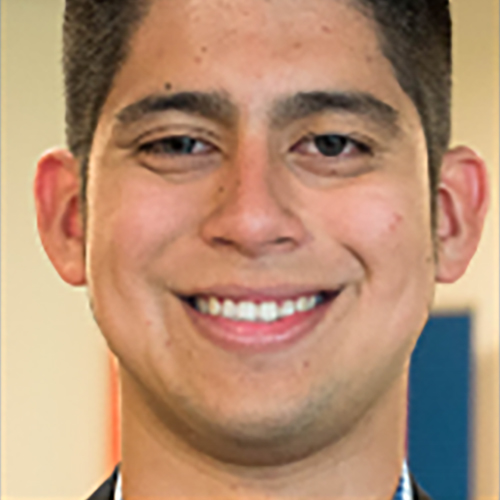 |
Andres Alvarez ’17Nuclear Science and Engineering Advisor and Direct Supervisor: Emilio Baglietto, Associate Professor, Nuclear Science and EngineeringSponsor: John C. Hardwick ’86, SM ’88, PhD ’92 Uncertainty quantification in CFD to reduce nuclear reactor operating margins This summer I participated in constructing computational fluid dynamics (CFD) simulations of turbulent mixing based on experiments conducted at the Paul Scherrer Institute. Turbulent mixing of coolant is an important phenomenon for nuclear systems, and a better understanding of uncertainty in turbulent mixing simulations would lead to better-informed operating parameters for nuclear power plants. This research experience through MITEI has allowed me to explore numerical methods used in CFD and has further motivated me to pursue energy studies from an advanced simulation perspective. Without this experience I would not have an understanding of the opportunities (and limitations) inherent in energy systems modeling and simulation. |
 |
Andres Badel ’17Chemical Engineering Advisor: Fikile Brushett, Assistant Professor, Chemical EngineeringDirect Supervisor: Liang Su, Senior Postdoctoral Associate, Chemical EngineeringSponsor: George R. Thompson, Jr. ’53 Sulfur-based aqueous redox-flow batteries Development of low-cost, efficient, and sustainable forms of stationary energy storage is necessary to facilitate the integration of renewable energy in to the electric grid. Redox-flow batteries are currently a promising candidate but the current costs are too high for widespread use. The project I participated in explored a polysulfide-polyiodide system as a potential solution, given the low cost of these abundant chemicals. Toward this aim, I performed a techno-economic analysis of existing energy storage systems. I also investigated the effects of numerous catalyst supports for both polysulfide and polyiodide species in the battery. Early into the fall semester, I will finish full-cell cycling experiments using these catalysts and present my work at the American Institute of Chemical Engineers National Conference. I enjoyed working with my supervisor to determine the scope and experimental plan for the project. My UROP helped solidify my decision to pursue graduate school with a focus on electrochemistry and energy storage. |
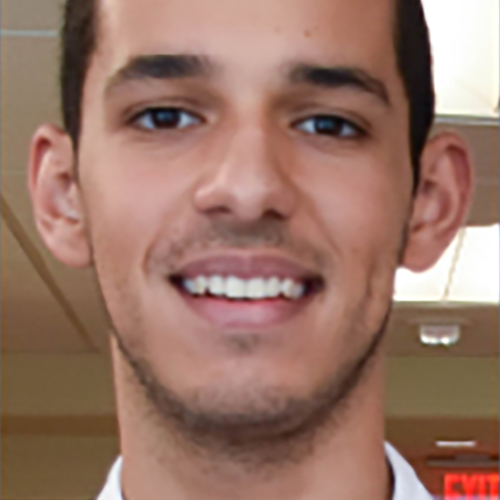 |
Ali Badr ’19Mechanical Engineering Advisor: Yang Shao-Horn, Professor, Mechanical EngineeringDirect Supervisor: Michal Tulodziecki, Postdoctoral Associate, Research Laboratory of ElectronicsSponsor: Lisa Doh Himawan ’88 Slurry-based semisolid redox-flow batteries This summer I worked at the Electrochemical Energy Lab on a new project involving slurry-based semisolid redox-flow batteries. While at first I felt completely overwhelmed with the information and did not understand much of what was going on, my graduate advisor and the rest of the lab helped guide me to the point where I could run experiments on my own. One of the main things I focused on in my UROP was designing the cells themselves, both for final use and to test different combinations of slurries along the way for their chemical structure and electrochemical performance. From this experience, I learned about many different experimental tests such as cyclic voltammetry and electrochemical impedance spectroscopy, among many others. I also learned what research and the process of getting batteries ready for manufacturing and use are like in general. Thanks to the sponsorship of MITEI and Lisa Doh Himawan ’88, I was able to spend my summer not only gaining knowledge in the field of electrochemistry but also gaining valuable work skills that I would not have learned otherwise. |
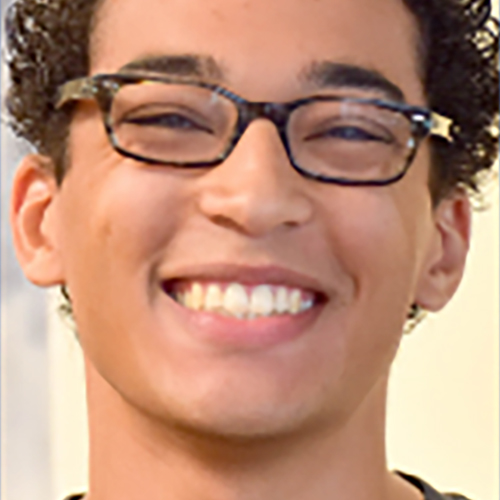 |
Ki-Jana Carter ’17Nuclear Science and Engineering Advisor: Michael Short, Assistant Professor, Nuclear Science and EngineeringSponsor: Lisa Doh Himawan ’88 Redefining radiation damage in materials by molecular dynamics simulations of Wigner energy storage The primary goal of my project was to find evidence, both experimental and computational, of a detectable difference in the heat capacities of metals due to the presence of radiation-induced defects. Using a differential scanning calorimeter, we were successfully able to measure peaks in the heat capacity curves of copper and zirconium, which we have attributed to the presence of defects; molecular dynamics simulations of the irradiation and calorimetry processes have supported these conclusions. My work on this project has been both enjoyable and educational. This project has great implications for the fields of nuclear materials and nuclear forensics, and on a personal level my work has both honed my computational skills and confirmed my aspirations to work in the field of materials for energy research. I plan to continue my work on this project in the fall semester. |
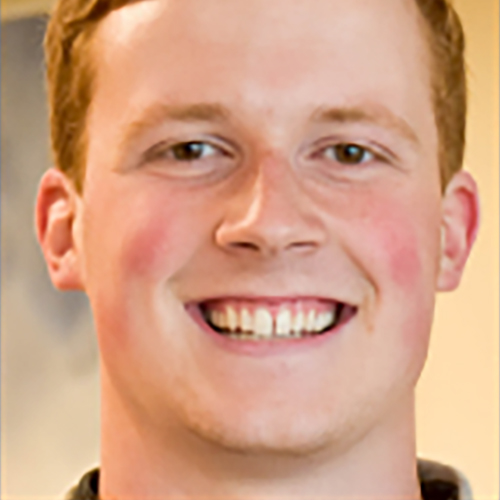 |
Jared Conway ’19Nuclear Science and Engineering Advisor: Neil Todreas, Professor Emeritus, Nuclear Science and EngineeringSponsor: John C. Hardwick ’86, SM ’88, PhD ’92 Simulation testing of the multi-layer security system of the novel offshore floating nuclear reactor plant This project involved using the security simulation software AVERT to test potential security plans for an offshore nuclear power plant (ONP). The detectors, barriers, and guards we tested were first proposed in MIT nuclear science and engineering graduate Vince Kindfuller ’16’s thesis. These components were implemented and tested in a model of the ONP. My favorite experience was flying to Washington, D.C. to work with AVERT developers. This UROP led me to consider a minor in energy, given that energy combines and challenges so many disciplines. It also showed me that there is much more that goes into energy production than fuel. The biggest lesson learned from the project is to consider all the aspects of a problem. Efficient, clean energy production is a major global priority, but plant size and land availability, structural stability and safety, and especially security are all problems that go along with energy production that need to be addressed with every energy producer before we can achieve this goal. |
 |
Sarah Curtis ’19Chemical Engineering Advisor: T. Alan Hatton, Ralph Landau Professor; and Director, David H. Koch School of Chemical Engineering PracticeDirect Supervisor: Xianwen Mao, Postdoctoral Associate, Chemical EngineeringSponsor: Chevron 2D modified polymer materials for electrochemically controlled separation in flow systems This project focused on testing different polymers to assess their electrochemical properties and optimize their use for a variety of applications, such as energy storage and environmental remediation. I experimentally characterized these polymers’ responses to electrochemical stimuli, used transmission electron microscopy to visually characterize samples, and modeled polymers theoretically in MATLAB. This summer, I learned a lot about the technical intricacies of chemical engineering, including transport modeling and systems analysis—two areas of research that make me excited about my field and its possibilities. I really enjoyed not only contributing to useful energy applications, but also gaining so much insight into being an engineering student and a researcher from all of the supportive graduate students in this lab. Working full-time this summer with the support of MITEI and Chevron has given me the skills and confidence to continue researching with the Hatton group next semester. |
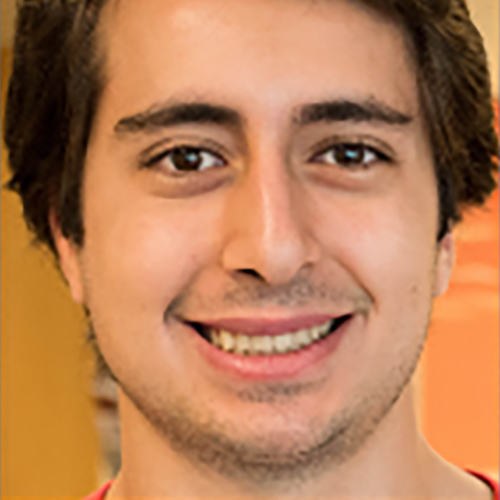 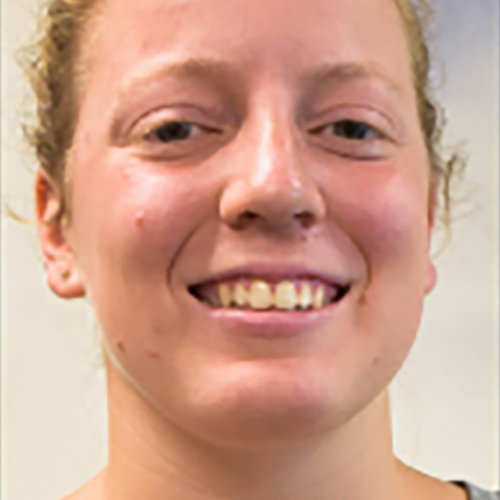  |
Juan Dejesus ’17Electrical Engineering and Computer Science Taylor V’Dovec ’19Mechanical Engineering Daniel Abiola Vignon ’17Mechanical Engineering Advisor: James Kirtley Jr., Professor, Electrical Engineering and Computer ScienceDirect Supervisor: Claudio Vergara, Postdoctoral Associate, MIT Energy InitiativeSponsor: J. S. Bechtel Jr. Foundation Implementation of a laboratory-scale grid-connected microgrid This summer, we worked on developing a laboratory-scale, 1,000 watt microgrid system consisting of a battery bank, a DC motor, and a generator. The system is capable of providing electricity to regular consumer products, as well as synchronizing with and connecting to the grid. The model that we built is going to be used for experiments and as a teaching tool in the class “6.061: Introduction to Electric Power Systems” next spring. Juan: I especially enjoyed working on programming and implementing the feedback control loops necessary for this set-up. While I still believe I want to continue working more on analog circuit design and power electronics, this research definitely opened the gate for my thesis work this upcoming year, which will be centered around improving this specific microgrid in terms of stability of the output at various loads. This experience was not only helpful from a technical point of view, but it also helped me understand a bit more about the challenges facing the implementation of this system in third-world countries. Taylor: I really enjoyed the hands-on nature of this project, and I learned so much throughout the summer, from circuitry to how to use a lathe. This experience with MITEI has really interested me in the development and implementation of renewable resources, and inspired me to pursue a career in the field of energy. Realizing how important a problem the future of energy production is and that I can help do something to solve it has definitely left an impact on me. |
 |
Reynaldo Garza ’19Mathematics Advisor and Direct Supervisor: James Bales, Associate Director and Instructor; MIT Edgerton CenterSponsor: Lisa Doh Himawan ’88 Aerodynamic design and manufacturing of solar vehicle fairings With the latest advances in solar vehicle research, several major changes to aerodynamic design must be made to be able to compete with the world’s leading solar vehicles at the World Solar Challenge. In particular, many new vehicles have switched to an asymmetric vehicle design, having the driver sit offset from the center. This design allows the use of thinner wheel fairings, which protect the wheels from debris and increase aerodynamic efficiency. In order to have a thinner fairing on turning wheels, the fairing must be designed and made to turn with the wheel. My goal was to design and create a carbon-fiber turning fairing for the Solar Vehicle Team’s new solar car. By the end of the summer term, I was able to finalize the design and create molds for the fairing. When making the molds, I greatly enjoyed learning different methods of machining and taking advantage of all the facilities that I had at my disposal. Working with carbon-fiber and making molds has increased my interest in materials science and how much it can increase efficiency in different industry fields. I’m excited to continue making carbon-fiber components on the team and hope to do more research with MITEI in the future. This was my first experience working full-time, and now I know what it’s like to pour all my effort into one big project. I’m very satisfied knowing what I can accomplish in the future. |
 |
Melissa Gianello ’18Mechanical Engineering Advisor: Evelyn Wang, Associate Professor, Mechanical EngineeringDirect Supervisor: Bikram Bhatia, Postdoctoral Associate, Mechanical EngineeringSponsor: MITEI Campus Energy Fund Daytime radiative cooler The project our group worked on has the potential to lower the cost and energy demand attached to air conditioning and refrigeration. Using highly reflective polished aluminum and insulating silica aerogel, we are able to passively cool a copper black-body—an opaque copper disk that emits thermal radiation and absorbs most incoming light without reflecting any—by radiating out more heat than is absorbed. My research focused on modeling and prototyping the device for testing, and calculating the heat transfer coefficient of the daytime radiative cooler. Daytime radiative cooling is a passive way of cooling an object without any input power. My favorite part of my experience was learning how to use new tools I had not been exposed to prior to my UROP, like a laser cutter, a water jet, and COMSOL software. My research and lab group helped me see how varied energy research can be and how small advancements can eventually have large and impactful applications. |
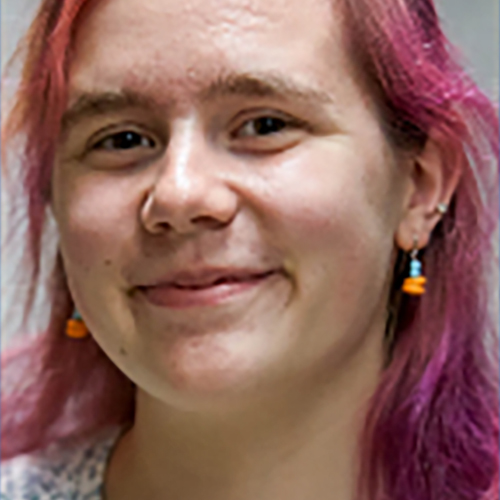 |
Megan Goodell ’19Mechanical Engineering Advisor: Gabriela Schlau-Cohen, Assistant Professor, ChemistryDirect Supervisor: Ashley Tong, Graduate Student, Biophysical ChemistrySponsor: Lisa Doh Himawan ’88 Building membrane discs to determine energy efficiency in photosynthetic proteins This summer I worked with the Schlau-Cohen group to build a model membrane system for use in studying transmembrane proteins such as LH2, a light harvesting complex found in the cell membranes of photosynthetic bacteria. These complexes absorb energy from photons, and transfer this energy to reaction centers where the chemical reactions of photosynthesis begin. Because this absorption and transfer of energy is remarkably efficient, the mechanisms these proteins make use of are valuable to study for possible applications to solar light harvesting technology. Because these proteins are transmembrane, they are best studied within a model membrane system like the nanodiscs we created. We were able to create nanodiscs of varying size containing LH2, and are hoping to soon incorporate multiple proteins per disc and begin spectroscopy experiments on the samples. I am thankful for the practical lab skills I gained through this UROP, and for my supervisor and other lab researchers’ accessibility and willingness to answer questions I had along the way. I’m very happy to have been able to work on understanding even a small part of the truly remarkable process that is photosynthesis. |
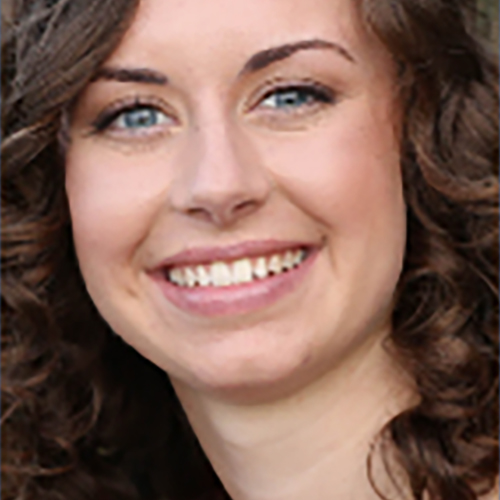 |
Ciera Gordon ’18Architecture Advisor: Leon Glicksman, Professor of Building Technology and Mechanical Engineering, ArchitectureSponsor: MITEI Campus Energy Fund Evaluating the benefit of mechanically assisted ventilation in commercial buildings in New England My UROP this summer focused on analyzing the success of the energy-saving features at the Division of Fisheries and Wildlife (DFW) Field Headquarters in Westborough, Massachusetts. The DFW Field Headquarters is the first net-zero-energy state office building in Massachusetts, and can serve as an example for how future buildings will adapt to the growing demand for clean energy. I really enjoyed getting to meet with the many people who helped design the building and those who are working on it now, all of whom were incredibly helpful in teaching me about the building and sharing their various perspectives on its success. This UROP made clear the role that energy studies can play in uniting my interests in architecture and mechanical engineering. Designing for energy efficiency and sustainability will only become more important in the future, and this UROP exposed me to both the opportunities and the challenges involved in green design. |
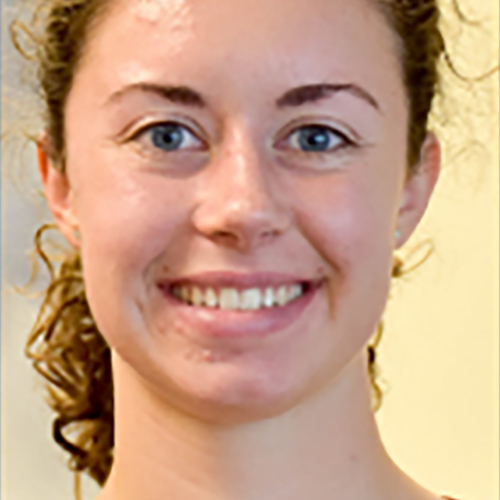 |
Sarah Hensley ’17Electrical Engineering and Computer Science Advisor: Russell Tedrake, Professor, Electrical Engineering and Computer ScienceDirect Supervisor: Michael Posa, Graduate Student, Electrical Engineering and Computer ScienceSponsor: Lockheed Martin Balance/force control for NASA’s humanoid: Valkyrie NASA designed Valkyrie for the DARPA Robotics Challenge, a competition announced after the Fukushima nuclear disaster, in which humanoid robots completed tasks to emulate how humans would respond to natural and man-made disasters. I simulated different controllers for Valkyrie’s arm to investigate methods for moving the arm faster and more accurately. My work made me realize how varied energy research can be. The value of having robots, which are unaffected by radiation, that can rescue humans from nuclear disasters is now clear, but had never occurred to me before. I love every aspect of my project: the fascinating math I see daily, the incredible robot I study, and the beneficial impact of my work on energy-related research. I want to pursue a career that combines the technical topics that interest me with the important goal of enabling energy research and development. |
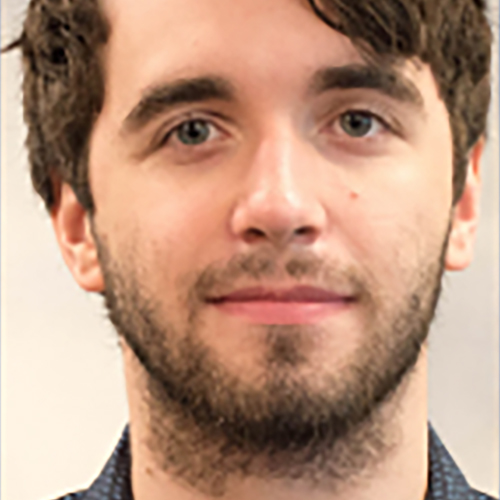 |
Robert Knighton ’18Physics Advisor: Marin Soljačić, Professor, PhysicsDirect Supervisor: Ido Kaminer, Postdoctoral Associate, Research Laboratory of ElectronicsSponsor: Shell International Efficient conversion of energy between electrons and photons using new techniques in non-perturbative QED The work I did this summer in the Center for Theoretical Physics was focused on finding efficient sources of high energy light in simple physical situations. We found that in the simplest possible material (a linear, homogenous, isotropic, bulk dielectric medium), there is an optical up conversion in the deep infrared which converts the incoming light by up to fifty factors. The cross section in this situation is very high (10^20 minibars—that is, orders of magnitude higher than the same process happening in a vacuum) in the same angular interval. Most of the work on this project was entirely done by me with pen and paper (and a slight bit of computational work). I learned a tremendous amount and gained many technical skills in my field of interest. The applications to energy are a bit far away, but this project gave me a new perspective that physics can be used to create efficient sources of energy much more easily than I originally thought. While I do not wish to pursue energy as a career, this experience has given me appreciation for energy studies and will guide my future work into a more energy-oriented direction. |
 |
Sean Lowder ’17Nuclear Science and Engineering Advisor: Michael Short, Assistant Professor, Nuclear Science and EngineeringSponsor: Alfred Thomas Guertin ’60 Stored energy in radiation defects: A new unit for radiation damage Though radiation damage is an important factor to consider when designing and operating nuclear power plants, there is currently no simple or accurate method to quantify the amount of damage that reactor material exposed to radiation has sustained. Our project is attempting to redefine the way that this damage is measured, thus enhancing our knowledge of reactor materials and general safety. Over the course of this summer, we have run simulations modeling radiation damage of varying degrees while simultaneously irradiating materials in the MIT Reactor. I have particularly enjoyed having the opportunity to work on both experiments and computations, as both are important in finding new solutions to our current issues. This research, and the students and professors that I have been working with, have shown me how important it is to find these solutions to current energy issues, and it has made me consider working on these complex issues in the future. |
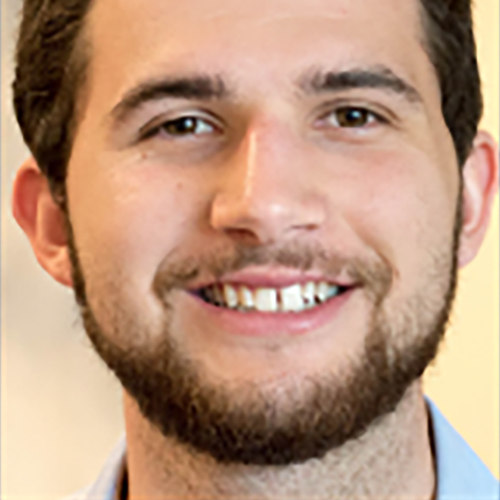 |
Ethan McGarrigle ’19Chemical Engineering Advisor: Jessika Trancik, Associate Professor, Institute for Data, Systems, and SocietyDirect Supervisor: Morgan Edwards, Graduate Student, Institute for Data, Systems and SocietySponsor: Shell International Opportunities for mitigating CH4 and other non-CO2 energy-technology-related greenhouse gas emissions The project’s goal was to assess how increased management of Hydrofluorocarbons (HFCs) in existing and future refrigeration and air-conditioning equipment could contribute to further mitigating HFC and CO2-equivalent emissions, and at what cost. As the lack of management of HFC-use equipment results in more HFC emissions, this project explores how increased management, specifically through destruction and recycling of HFCs, could further contribute to mitigation. Toward this goal, I modeled HFC material flows and applied reasonable recycling rates to generate recycling’s impact on mitigating emissions. As coding is one of my favorite activities, I really enjoyed learning to use LaTeX and Python, producing write-ups and reports with LaTeX while modeling HFC material flows with Python. This project also expanded my conception of the types of energy careers available by introducing me to energy economics and climate change policy and rhetoric, helping me to understand how emissions credits and the carbon markets operate in relation to climate change goals. This project changed how I approach research by teaching me a process: developing a research question, surveying all known information about the topic, developing a model, and analyzing results. |
 |
Andrea Meister ’18Mechanical Engineering Advisor: Amos Winter, Assistant Professor, Mechanical EngineeringSponsor: Tata Center for Technology and Design Energy-efficient, low-cost irrigation systems for farmers in developing countries My group in the GEAR Lab works to improve the consistency and lower the cost of drip irrigation by fabricating new drippers—the functional part of a drip irrigation system that delivers precise amounts of water directly to the roots of plants—to operate at lower and varying water pressures. My work focused on fabricating and testing the drippers. Methods for testing required continuous improvement and further automation, however, which I found challenging and satisfying to pursue. This UROP reinvigorated in me a desire to improve life in other parts of the world, a quality I will continue to search for in future work. It also taught me how integral energy is to many facets and areas of design. Although the area of expertise required in my field is largely fluids, the underlying reason for our work is reducing the energy required to operate the system. This summer, it was fascinating to watch so many different topics intertwine to promote a single, worthy goal. |
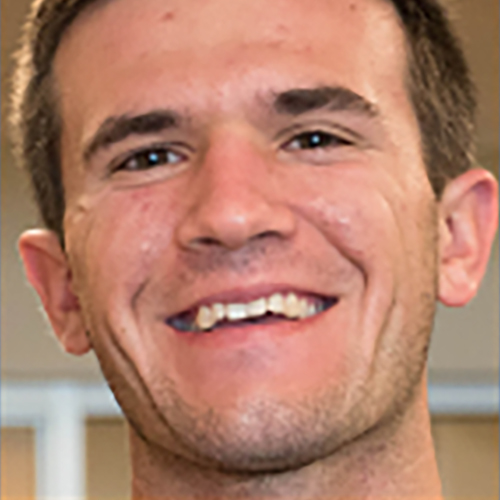 |
Zachary Michaud ’18Chemical Engineering Advisor: Bradley Olsen, Associate Professor, Chemical EngineeringDirect Supervisor: Carolyn Mills, Graduate Student, Chemical EngineeringSponsor: George R. Thompson, Jr. ’53 Effects of charge and hydrophobicity on ELP-mCherry self-assembly The goal of this project was to explore how enzymes could be applied as part of a connected network of elastin-like polypeptides (ELPs) to improve energy efficiency in reactions. To do this, we built nine different ELP-mCherry proteins and characterized the self-assembly patterns and the transition (between phases) temperature. The mCherry, a protein so-named for its fluorescent red color, was connected to the ELPs (polymer-like structures in which intermolecular interactions cause a specific nanostructure to form) similar to the way an enzyme would, and was used as a fluorescent marker to more easily identify self-assembly characteristics. I enjoyed working on this project and getting a real feel for how exciting research could be, discovering new things that have never been done before. During the project, I realized how broad the field of energy is, from working with enzymes to designing reactors. The field of energy studies is truly vast, and there are all kinds of ways to make an impact within it. |
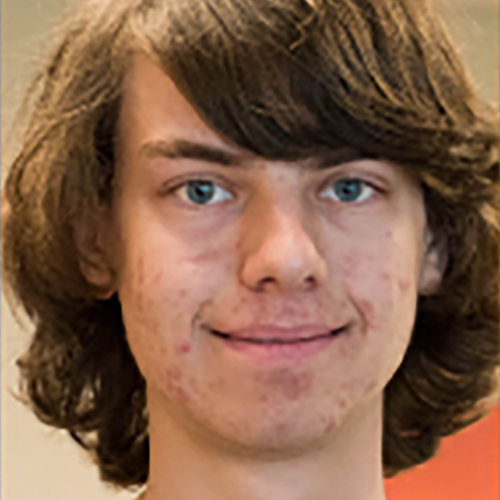 |
Helmuth Naumer ’19Electrical Engineering and Computer Science Advisor: Daniel Frey, Professor, Mechanical Engineering and Engineering SystemsDirect Supervisor: Nicolas Arango, Graduate Student, Electrical Engineering and Computer ScienceSponsor: Alfred Thomas Guertin ’60 Development of a high voltage routing and architecture: Electric Vehicle Team This summer, I worked with the MIT Electric Vehicle Team on steps toward converting an Opel GT to electric. While I initially contributed to the high voltage systems, we hit a roadblock with supplies, and I moved over to help with the battery validation and characterization project that was running concurrently. With the high voltage systems, I added to two of the modules in the vehicle that together help control the motor, and managed to get three modules to work together to allow a human-facing interface to control the speed of the motor. After that, I worked with the batteries, designing a circuit, firmware, and mixed-signal PCB to validate the battery ensembles during charge and discharge cycles. I enjoyed getting experience machining parts and learning about designing boards for the real world. |
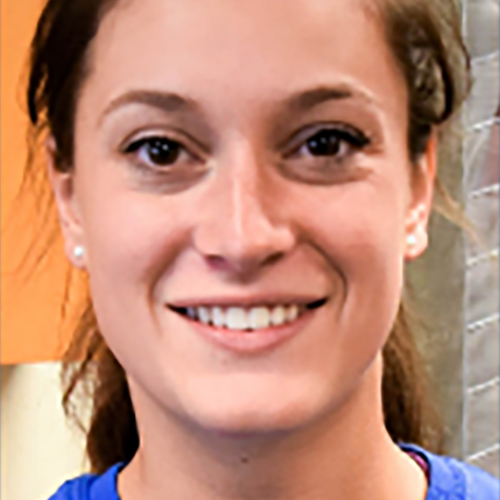 |
Kathryn Notarangelo ’18Chemical Engineering Advisor and Direct Supervisor: Jean-François Hamel, Research Engineer, Chemical EngineeringSponsor: Chevron Aerobic cultivation of oleaginous yeast strains to produce fatty acids for biofuel application This summer, I worked on a project in the Hamel Lab that focused on the cultivation of yeast strains that produce fatty acids that can be used as a precursor to biofuel. Specifically, I worked on developing a cheap medium from a sorghum hydrolysate carbon source on which the yeast could grow and also on comparing the effects of different glucose feeding strategies on the yeast’s growth and lipid accumulation. I thought it was really cool to work on a project that in the long run could affect everyday life and potentially solve major problems. This UROP helped broaden my view of the energy industry and got me excited to see what more I can do in the field. |
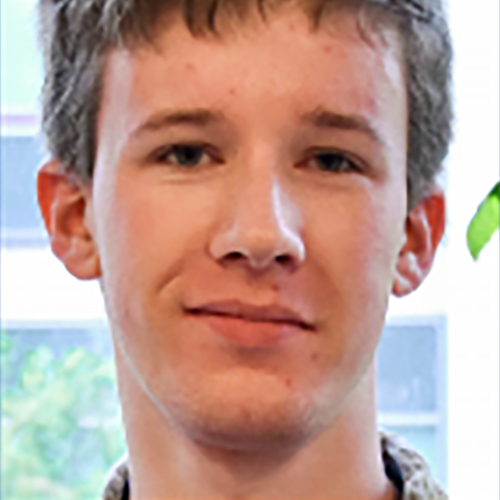 |
Nolan Peard ’19Mathematics Advisor: Jeffrey Grossman, Professor, Materials Science and EngineeringDirect Supervisors: Yun Liu and Owen Morris, Graduate Students, Materials Science and EngineeringSponsor: Jerome I. ’51 ScD ’56 and Linda Elkind Quantum excitonics in PbS QD photovoltaics with applications to the Stokes shift and SQ limit This research aims to examine the effects of atomic structure variations on the electron transport in systems of thin-film colloidal quantum dots (used to make solar cells) via the use of atomistic modeling. We developed a simulation environment and tuned testing parameters for our system of interest: lead sulfide quantum dots. After extensively refining our calculation methods, preliminary results indicate that we have finally calculated certain critical physical properties of quantum dots that have been previously confirmed by experimental techniques. I enjoyed the opportunity to work with high-performance computing resources as a means of learning about quantum chemistry and how such techniques can be applied to energy research. Since this work is part of a long term research effort toward understanding and improving the physics of photovoltaics, I hope to continue working on the project over the next year. |
 |
Julia Rubin ’17Materials Science and Engineering Advisor: Evelyn Wang, Associate Professor, Mechanical EngineeringDirect Supervisor: Dion Savio Antao, Research Scientist, Mechanical EngineeringSponsor: MITEI Undergraduate UROP Fund Selective solar absorber materials: Nanostructured surfaces via scalable synthesis Solar-thermal absorber material technologies harness solar energy via black surfaces that are highly absorptive of wavelengths in both the solar and infrared (IR) spectrum. These surfaces absorb solar energy and convert it to usable energy. However, high absorptivity of wavelengths in the IR spectrum results in energy loss due to radiative heat loss. Selective solar absorbers promise higher efficiency for solar-thermal material technologies by reducing radiative heat loss. Selective absorbers reduce absorptivity in the infrared spectrum, thus decreasing radiative heat loss, while maintaining high absorptivity in the solar spectrum. I have been working with copper oxide nanostructures as a potential selective absorber surface. Through fabrication and optical analysis of these nanostructures, I have gained a better understanding of the efficiency, robustness, and viability of these surfaces as selective absorber materials. While working on this project, I’ve enjoyed the opportunity to learn about the solar absorber landscape as a whole and have appreciated being part of a wider quest for sustainable energy. I hope to continue to learn about and work on renewable energy solutions in the future. |
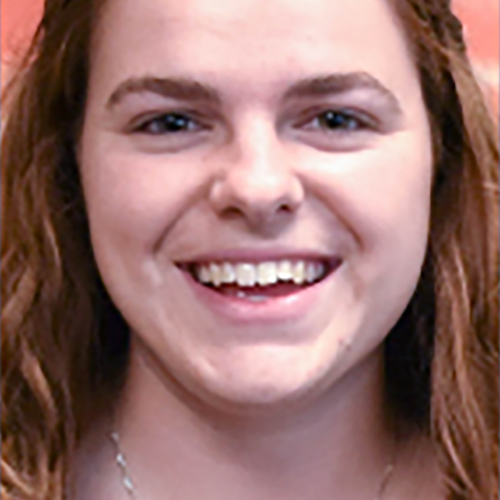 |
Allison Shepard ’19Chemical Engineering Advisor: Kristala Jones Prather, Associate Professor, Chemical EngineeringDirect Supervisor: Jason Boock, Postdoctoral Associate, Chemical EngineeringSponsor: Shell International Metabolic engineering for optimized biofuel production This summer I worked on optimizing the pathway that produces 4-methyl-1-pentanol (4MP), a promising biofuel that could replace petroleum-based gasoline in modern transportation vehicles. To produce higher concentrations of the desired product, I assessed and modified the ten-step metabolic pathway that converts glucose to 4MP. Most of my work this summer focused on shifting the pathway to become NADH-driven and function anaerobically, or without oxygen, which could result in upwards of a ten-fold increase in 4MP production. To do so, I began testing alternative enzymes to replace the NADPH-dependent enzymes previously used in the pathway, as well as testing parts of the pathway anaerobically. I have really enjoyed my UROP experience, not only because I gained numerous lab skills and techniques, but also because I was able to independently devise, test, and implement solutions that have the potential to create a great impact in the field of energy. |
 |
Jamison Sloan ’18Physics Advisor: Marin Soljačić, Professor, PhysicsDirect Supervisor: Ido Kaminer, Postdoctoral Associate, Research Laboratory of ElectronicsSponsor: New York State Energy Research and Development Authority Fluorescent spectra of graphene plasmons The goal of my project was to understand how proximity to light-confining materials can impact the cascadic spectrum of atomic emitters. This project has been extremely enjoyable because the project and goal were well-defined, and my mentors helped me personally work toward this goal. Instead of feeling like a student helping out with a professor’s research, I felt like I made my own contribution to the field. I enjoyed this field of research and plan to continue working with this research group for semesters to come. I take interest in work related to energy, particularly in how work on the nanoscale can have implications for energy storage and conversion. This experience has helped confirm that I wish to pursue a career in academia. |
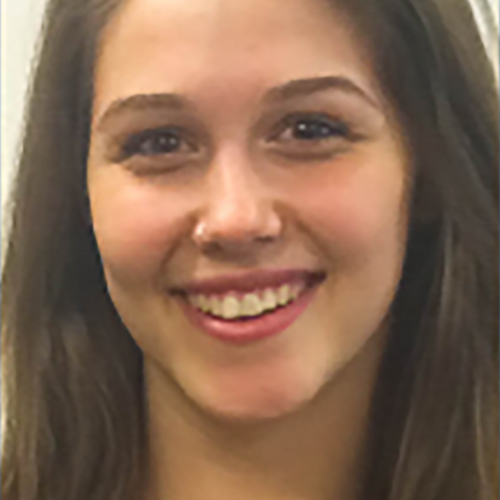 |
Rebekah Terry ’19Physics Advisor: Rohit Karnik, Associate Professor, Mechanical EngineeringDirect Supervisor: Piran Kidambi, Postdoctoral Associate, Mechanical EngineeringSponsor: Chevron Transportation across atomically thin membranes This past summer, I explored the intricacies of graphene’s application as a filter for separating small molecules. My research focused mainly on methods of achieving optimal graphene quality while fabricating graphene sheets with nanometer-sized pores; by achieving this, researchers could create an extremely energy-efficient method of filtration that is both cost effective and reliable. I enjoyed the opportunity to work in a laboratory setting, as my previous research experience was restricted to computer simulation and mathematical modeling. Gaining a new perspective on the research process and my physics background’s broad applicability lead me to consider much more seriously the research path (specifically in energy studies) over that of industry. In addition, this first look into energy research that MITEI provided has motivated me to pursue a minor in energy studies here at MIT. |
 |
Duncan Wheeler ’18Physics Advisor: Marin Soljačić, Professor, PhysicsDirect Supervisor: Yichen Shen, Postdoctoral Associate, Research Laboratory of ElectronicsSponsor: Alfred Thomas Guertin ’60 Improved transparent solar cell design For this project, I developed an improved design for transparent solar cells. These cells have the potential to maintain a high transparency of over 50% while reaching efficiencies of almost 10%. In addition to learning a lot about the science of optics and photovoltaics, this project also taught me about the current state of solar energy. I began to appreciate the motivating factors behind current research directions, such as the increasing pressure to make solar cells more flexible, cheaper, and easier to install rather than more efficient. I also particularly enjoyed being in a full-time research environment for the first time and learning how the research process works. I learned that every challenge that I encountered in my research really just raised new questions to look at and lead to further understanding of how to improve our design. |